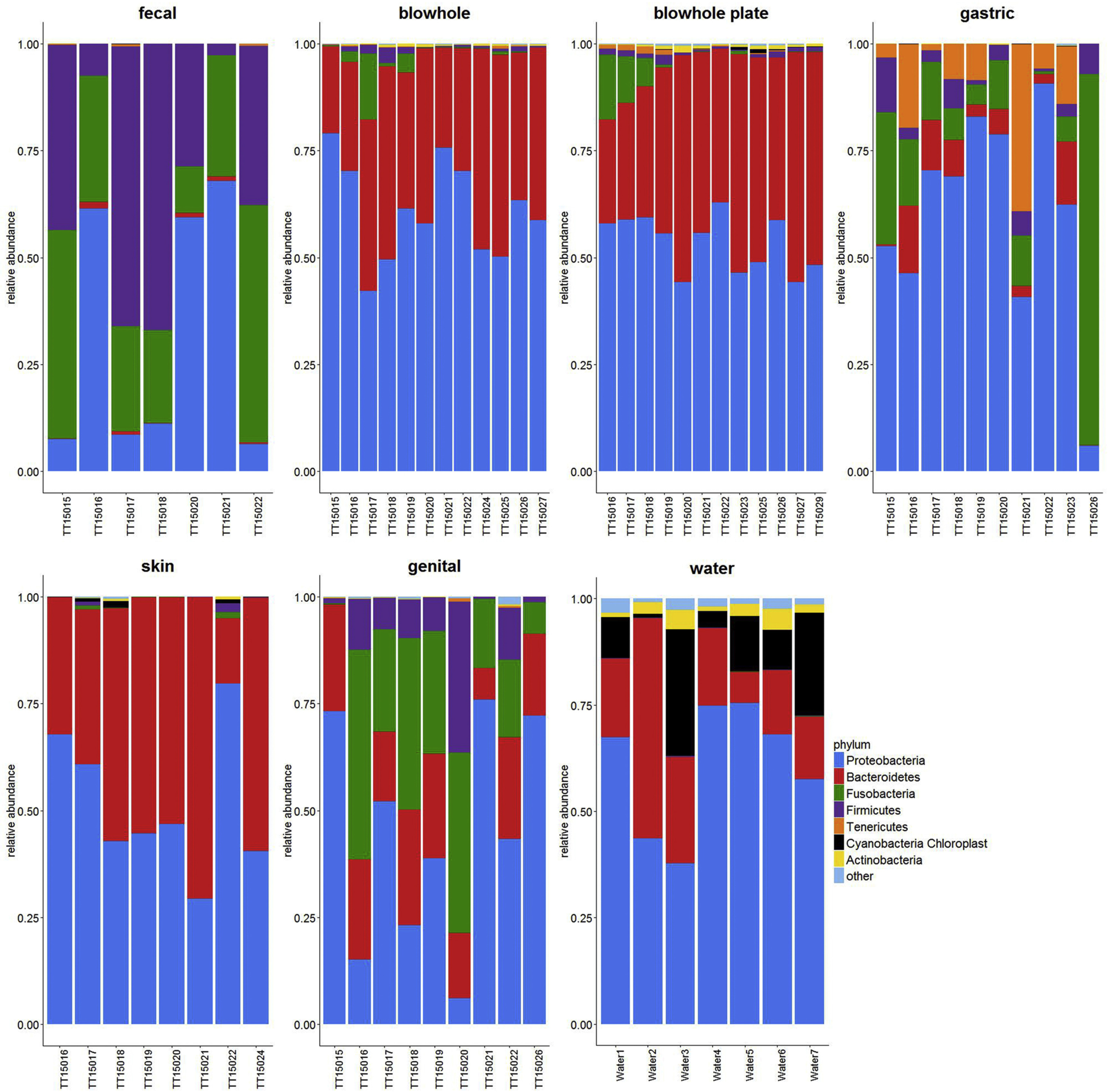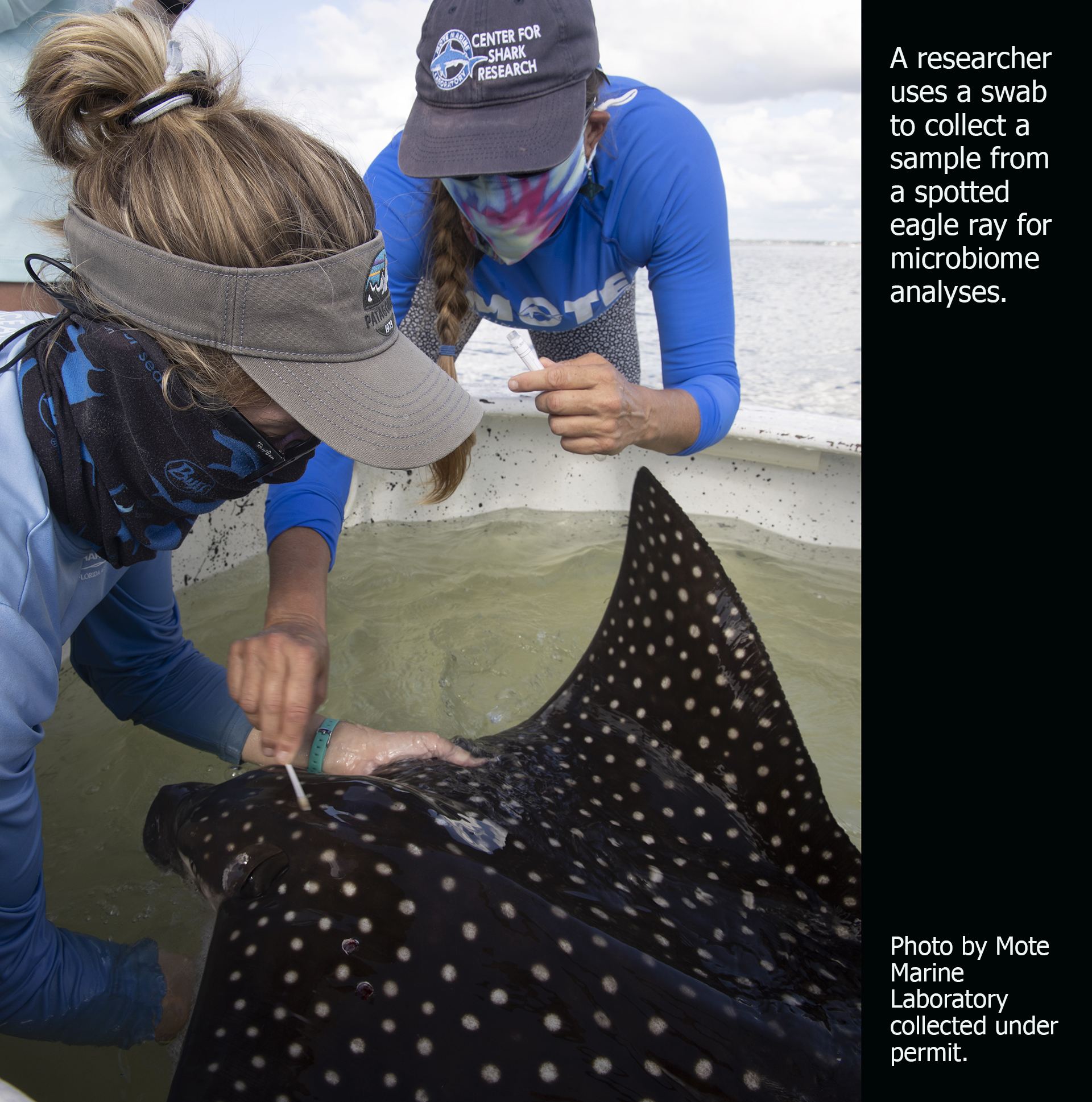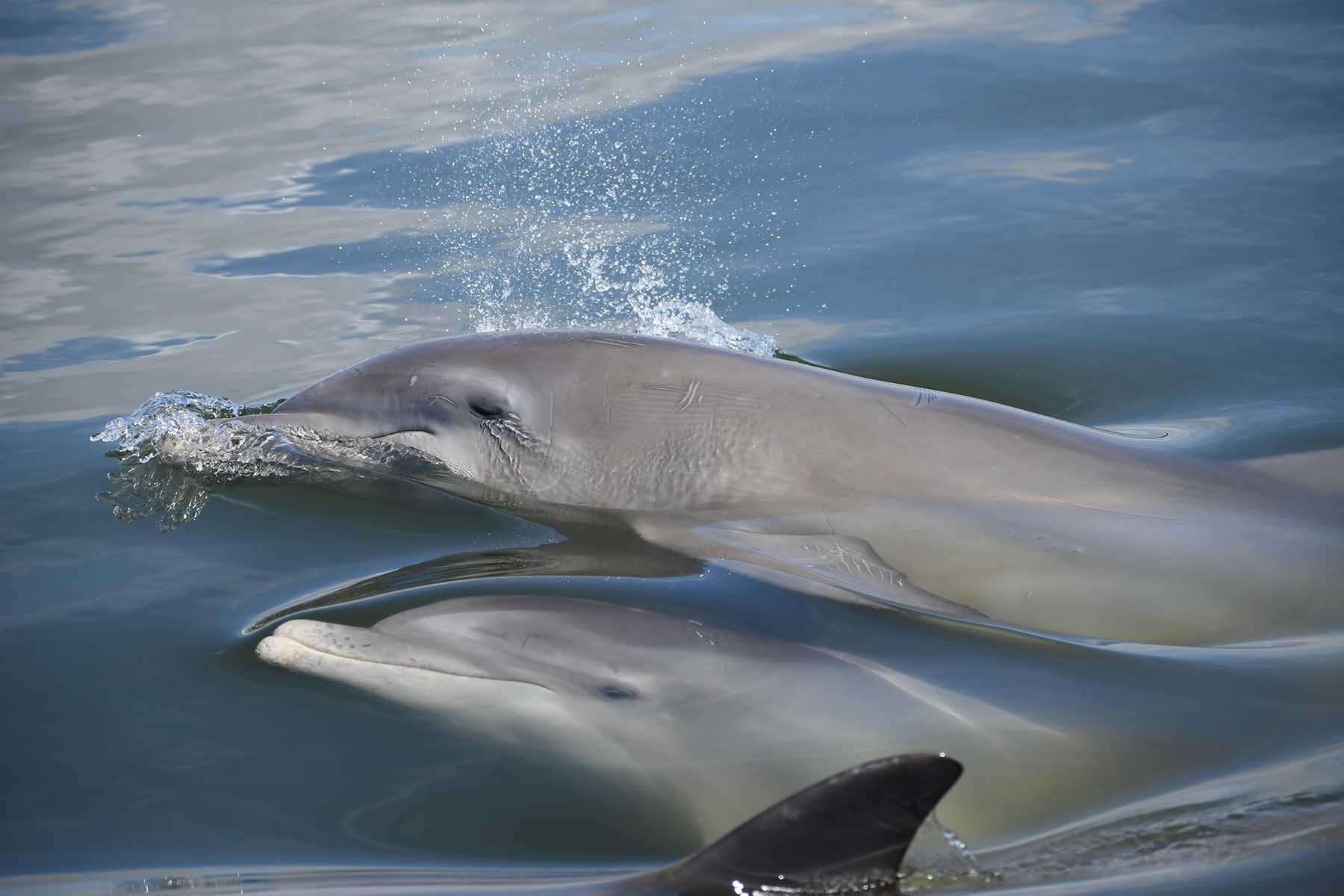Exploring Microbiomes
The science of understanding microbiomes has received increasing attention over the past few decades, especially in the context of understanding animal health.
Microbomes are a collection of microorganisms (bacteria, viruses, fungi, etc.) living together and interacting with each other in an environment. Animals — including humans — have microbiomes on external and internal surfaces like on skin, or in the stomach or gills. Microbiomes can aid digestion, regulate immune systems, produce vitamins and protect an animal against harmful bacteria.
Working with colleagues at a variety of institutions, the Sarasota Dolphin Research Program has been involved in published studies looking at the microbiomes of Sarasota Bay bottlenose dolphins and shark, skate and rays.
In “Characterization of the bacterial microbiome among free-ranging bottlenose dolphins (Tursiops truncatus),” University of Florida Master’s student María Robles-Malagamba and colleagues characterized and compared the bacterial microbiome of 14 healthy bottlenose dolphins from six anatomical sites representing four body systems: respiratory, digestive, reproductive, and integumentary (external, i.e. skin). It was the first study to explore the diverse bottlenose dolphin genital microbiome.
The analysis showed that bottlenose dolphins harbor diverse bacterial communities with a unique microbial community for each body system, which was also distinct from their surrounding habitat. The study also found a higher abundance of the bacteria Treponema in the genital samples — a finding that has never been reported for a cetacean species. In humans, Treponema pallidum causes syphilis. The finding raises the need for further investigation to determine whether the Treponema species is unique to dolphins and whether it causes disease.
Gathering this baseline microbiome information could help in future studies assessing the health of bottlenose dolphin populations.

Composition and relative abundance of phyla found in bottlenose dolphin body sites versus seawater samples. Each plot represents a different body site with bars representing individual dolphin or water specimens within each plot. The seven colors represent the different bacterial phyla found in the specimens. The average relative abundance of each phyla across specimens was calculated and those with an average relative abundance ≤0.0005 were filtered out.
In “Elasmobranch microbiomes: emerging patterns and implications for host health and ecology,” researchers looked at the growing body of work focused on elasmobranch microbiomes, identified major bacterial lineages and highlighted microbiome variation among gastrointestinal, oral, skin, and blood-associated niches. They also identified challenges and avenues for future research.
Interestingly, sharks, skates and rays — a class of animals called elasmobranchs — appear to be highly cancer resistant, exhibit quick wound healing and rarely exhibit infections from injuries — suggesting unique interactions with microbes that remain unknown.

The researchers argue that understanding elasmobranch–microbiome interactions is critical for predicting how sharks and rays may respond to a long-term oceanic changes, as well as for managing healthy populations in human care.
Read More
Robles-Malagamba, M., M. T. Walsh, M. Shamim Ahasan, P. Thompson, R. S. Wells, C. Jobin, A. A. Fodor, K. Winglee and T. B. Waltzek. 2020. Characterization of the bacterial microbiome among free-ranging bottlenose dolphins (Tursiops truncatus). Heliyon 6: 1-10. e03944. DOI: 10.1016/j.heliyon.2020.e03944 https://www.sciencedirect.com/science/article/pii/S2405844020307891
Perry, C.T., Pratte, Z.A., Clavere-Graciette, A. Ritchie, K.B., Hueter, R.E., Newton, A.L., Fischer, G.C., Dinsdale, E.A., Doane, M.P., Wilkinson, K.A., Bassos-Hull, K., Lyons, K., Dove, A.D.M., Hoopes, L.A., Stewart, F.J. Elasmobranch microbiomes: emerging patterns and implications for host health and ecology. anim microbiome 3, 61 (2021). https://doi.org/10.1186/s42523-021-00121-4





